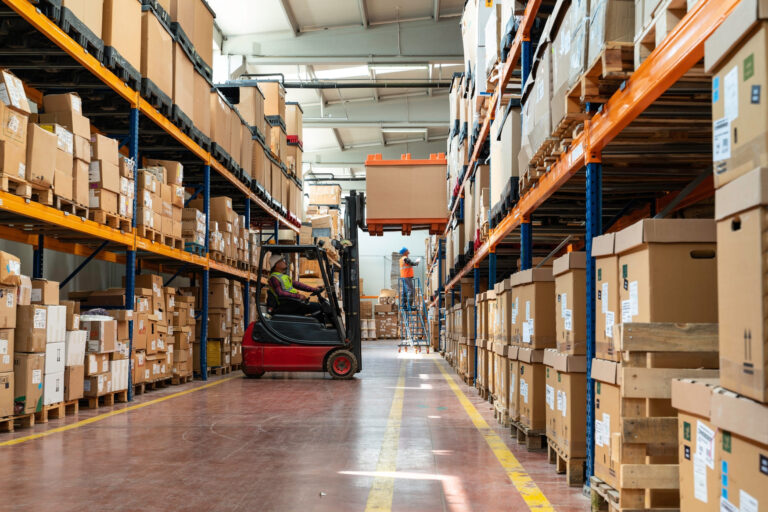Is 4PL More Cost‑Effective Than 3PL? Detailed Cost & ROI Guide

Rising transportation costs and service disruptions have forced many businesses to reassess their logistics strategy. According to the 2025 Third‑Party Logistics Study, 89 % of shippers report successful relationships with 3PL providers but only 68 % say their 3PL reduces costs. This gap hints at a critical question: could a fourth‑party logistics (4PL) model provide better cost efficiency? Below we dive deep into what each model offers, unpack cost structures and share real‑world data to help you decide.
What Are 3PL and 4PL?
3PL Definition and Services
Third‑party logistics (3PL) providers handle discrete logistics functions such as warehousing, transportation, pick‑and‑pack, labeling and returns. They may own or lease warehouses, vehicles and other assets and focus on operational execution. Pricing is typically transactional – you pay per unit received, stored or shipped. This converts fixed costs into variable costs, making 3PLs attractive for small to mid‑sized businesses.
4PL Definition and Scope
A fourth‑party logistics (4PL), also called a lead logistics provider, acts as an integrator. It does not own physical assets but manages multiple 3PLs, carriers and technology providers to orchestrate your entire supply chain. 4PLs design network strategy, negotiate with carriers, provide control‑tower visibility and continuously optimize routing, inventory and freight selection. Pricing usually includes a management fee and gain‑share incentives, aligning both parties to cost savings.
Quick Comparison
| Feature | 3PL | 4PL |
|---|---|---|
| Scope | Executes specific tasks (transportation, warehousing, pick/pack) | Orchestrates entire supply chain, including planning and continuous improvement |
| Asset ownership | May own or lease warehouses, vehicles and labour | Non‑asset; leverages multiple 3PLs and carriers |
| Technology | Uses warehouse management systems, transportation management systems and EDI | Employs control tower, advanced analytics and predictive modeling for end‑to‑end visibility |
| Pricing | Transactional (per unit / per order) | Management fee + gain‑share |
| Strategic role | Tactical execution; limited strategic oversight | Strategic partnership; advises on network design, risk management and optimization |
Cost Structures Explained
3PL Pricing Breakdown
Most 3PL contracts bill per activity. Typical receiving fees range from $0.30–$0.60 per unit, storage costs $5–$20 per pallet per month, and pick‑and‑pack fees run $2–$5 per order, with packaging materials costing about $1.20 per order. A business shipping 10,000 orders per month might spend $240k–$300k per year on 3PL services. Because costs scale linearly with volume, 3PL is generally more affordable for small to mid‑sized merchants.
4PL Pricing Breakdown
A 4PL charges a management fee usually 5–12 % of total logistics spend, plus a one‑off implementation fee (between $50k and $500k) and annual platform fees ($10k–$50k). Many contracts use gain‑share models that reward the 4PL for achieving cost savings. Despite higher upfront costs, 4PL providers often deliver 10–25 % total supply‑chain cost reductions and ROI within 18–24 months. For example, a company spending $5 million annually on logistics and paying a 6 % management fee would spend $300k on the fee but can save roughly $750k (15 % cost reduction); net savings would be $450k per year.
Cost Comparison Table
| Metric | Typical 3PL Cost | Typical 4PL Cost | Notes |
|---|---|---|---|
| Receiving | $0.30–$0.60 per unit | Included in 4PL’s orchestration; underlying 3PLs still bill but 4PL negotiates rates | 4PL may secure better rates across multiple 3PLs |
| Storage | $5–$20 per pallet/month | 4PL optimizes network to reduce total pallets and uses gain‑share | Savings come from inventory reduction and better slotting |
| Pick/Pack & packaging | $2–$5 per order + ~$1.20 materials | Underlying 3PL charges still apply; 4PL may reduce touches via automation | 4PL invests in process improvements |
| Management fee | None (transactional pricing) | 5–12 % of total logistics spend + $50k–$500k implementation | 4PL fees offset by cost savings |
| Total cost savings | Typically minimal on strategic optimization | 10–25 % reduction in total supply‑chain costs | Savings depend on network complexity and volume |
Is 4PL More Cost‑Effective?
The answer depends on your scale and complexity.
When 3PL is cheaper:
- Low volume or single‑node networks: If you ship a few hundred orders per month from one warehouse, a 4PL’s management fee may outweigh its benefits. 3PL pricing remains transactional and predictable.
- Short‑term projects: For seasonal peaks or simple overflow, 3PLs can rapidly add capacity without long implementation timelines.
- Hands‑on brand experience: Direct control over packaging, branding and returns often favours a 3PL relationship.
When 4PL becomes cost‑effective:
- High logistics spend: Once annual logistics costs exceed roughly $2–$3 million, the potential savings (10–25 %) can far exceed a 6–10 % management fee. In our earlier example, a $5 million logistics spend could yield $450k net savings.
- Multi‑node or international networks: 4PLs excel at coordinating multiple warehouses, carriers and customs brokers. They can balance inventory across nodes, reduce overall stock levels and negotiate better freight rates.
- Need for strategic analytics: 4PL control towers use advanced analytics and AI to predict demand, optimize routes and manage risk.
- Desire for one contract and KPI set: Instead of managing several 3PL contracts, a 4PL offers a single point of accountability and unified service‑level agreements.
Ultimately, 4PL is not inherently cheaper; it is more cost‑efficient over time when the network complexity and spend justify the management fee. Businesses should evaluate total cost of ownership (including inventory holding, stockouts and administrative overhead) rather than only transactional rates.
Case Studies & Evidence
Semiconductor 4PL Case: A Fortune 500 semiconductor company working with Rinchem’s 4PL service improved inventory management by 60 %, freeing $6.9 million in working capital and saving $5.6 million in operating expenses by reducing obsolete materials and stockouts. The case demonstrates that strategic inventory reduction and real‑time visibility can yield significant financial benefits.
Long‑Term Cost Savings Case: A 10‑year study on a South African retailer found that outsourcing distribution to a 4PL not only achieved targeted savings but delivered sustained cost reductions over the entire decade. This suggests that 4PL partnerships are viable for long‑term cost control, not just one‑off savings.
3PL Experience Statistic: While many shippers are satisfied with 3PLs, only 68 % believe their 3PL reduces supply‑chain costs. This indicates that 3PLs may not provide the strategic optimization required for substantial cost reductions.
Benefits Beyond Cost
4PLs provide more than financial savings:
- End‑to‑end visibility and control: A control tower integrates data from multiple providers, giving real‑time insight into inventory, shipments and exceptions.
- Strategic partnership and continuous improvement: 4PLs participate in network design, procurement, risk management and sustainability initiatives. They offer neutrality when choosing carriers and 3PLs and align their incentives via gain‑share models.
- Scalability and flexibility: 4PLs can reconfigure networks quickly in response to demand or disruptions and leverage global partnerships to secure capacity.
- Technology integration: Advanced analytics, predictive modelling and AI improve forecasting, reduce lead times and optimize route planning.
However, there are potential drawbacks:
Loss of direct control: Companies may feel detached from day‑to‑day operations and risk over‑reliance on a single partner.
Higher upfront costs and longer implementation: A 4PL implementation may take 9–12 months with significant integration and data‑governance work.
When to Choose 3PL vs 4PL
| Scenario | Recommendation |
|---|---|
| E‑commerce merchant shipping <5k orders per month | Start with a 3PL. Transactional pricing is more cost‑effective, and you maintain direct control over packaging and brand experience. |
| High‑growth brand shipping >10k orders per month or operating across multiple regions | Evaluate a 4PL. Potential savings from network optimization and reduced inventory can offset management fees. |
| Complex supply chain with multiple 3PLs/carriers, import/export compliance and tight SLAs | 4PL recommended. A control tower can manage KPIs, negotiate rates and ensure end‑to‑end visibility. |
| Project‑based or seasonal overflow needs | 3PL suffices. Its flexibility and short contracts allow quick capacity adjustments. |
| Long‑term strategic partnership and continuous improvement desired | 4PL. Gain‑share models align incentives and encourage continuous cost reductions. |
Conclusion & Next Steps
For many small and mid‑sized businesses, a 3PL remains the most cost‑effective option thanks to straightforward, pay‑as‑you‑go pricing. However, for enterprises with multi‑node networks, complex cross‑border operations or annual logistics spend above $2–$3 million, a 4PL can unlock significant cost reductions and strategic benefits. The decision should be grounded in a total cost of ownership analysis that includes inventory carrying costs, stockouts, freight rates, technology investment and internal overhead. Assess your growth plans, supply‑chain complexity and tolerance for integration work before choosing a partner. Consulting experienced logistics professionals and issuing a well‑structured RFP can help you quantify potential savings.
Frequently Asked Questions (FAQ) – OLIMP Warehousing
Q: Is 4PL cheaper than 3PL for small businesses?
Not usually. Small businesses with modest order volumes often find 3PL pricing more affordable because fees are transactional. A 4PL charges management fees that may exceed potential savings unless your logistics spend is in the millions.
Q: How much does 4PL cost compared to 3PL?
A 4PL typically charges 5–12 % of your total logistics spend, plus implementation fees ($50k–$500k) and platform fees. 3PL costs are per unit or per order (e.g., $0.30–$0.60 for receiving, $2–$5 for pick/pack).
Q: When should you choose a 4PL over a 3PL?
Choose a 4PL when your supply chain spans multiple regions or service providers, when you want a single point of accountability and when your annual logistics spend is high enough that 10–25 % savings outweigh management fees.
Q: What is a control tower in logistics?
A control tower is a central platform that provides end‑to‑end visibility and analytics across the entire supply chain. It collects data from multiple 3PLs, carriers, and systems to monitor KPIs, predict disruptions and coordinate actions.
Q: How long does 4PL implementation take?
Implementation typically takes 9–12 months, including data integration, process alignment and system configuration. Businesses should plan for change management during this period.
You may be interested in

3PL vs In-House Logistics: When to Use a Warehouse or 3PL? (Essential Guide)
Running order fulfillment from your garage or back room can save money at first, but growth brings new challenges. In-house logistics means you handle everything yourself – storing inventory, packing boxes, managing shipping, and processing returns. This gives you full control and customization, but it becomes complex as orders grow. A 3PL (third-party logistics) provider […]

3PL Mispick Prevention: Best Practices for Error‑Free Fulfillment
In the fast‑paced world of e‑commerce and retail, accuracy is everything. A mispick-selecting the wrong item, quantity or variant during order picking-disrupts operations, drives up costs and erodes customer trust. Industry estimates show that mispicks can cost between $50 and $300 per incident and that approxima tely 30 % of customers will not reorder after […]

4PL Logistics: The Ultimate Guide to Fourth-Party Logistics
Fourth-party logistics (4PL) refers to hiring a single partner to integrate and manage an entire supply chain. In practice, a 4PL provider acts as a strategic supply chain integrator, overseeing transportation, warehousing, inventory, and fulfillment on behalf of a company. In other words, businesses outsource their full logistics management to one expert who coordinates multiple […]
Ready to streamline your warehousing needs?
Request a quote today and discover how OLIMP's tailored solutions can optimize your operations